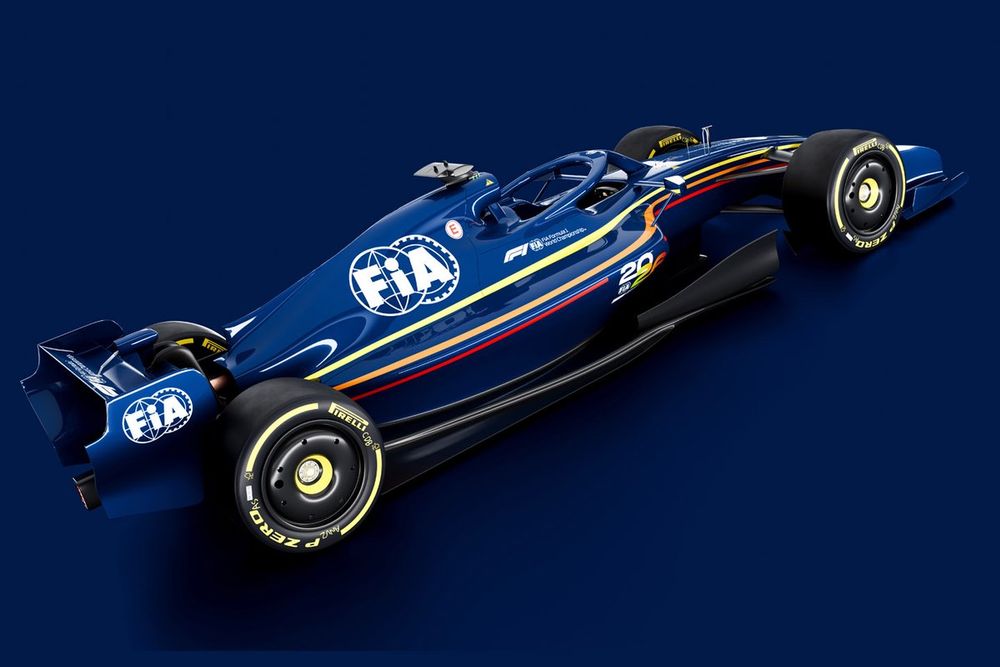Teams are currently making preparations concerning the comprehensive revisions anticipated for Formula 1, addressing both the vehicle’s structure and the engine configuration scheduled for 2026. It’s important to note that the introduction of these prospective regulations isn’t universally embraced.
Various individuals involved in driving have shared their perspectives after engaging in introductory assessments utilizing simulator technology. Max Verstappen initiated this feedback loop a couple of years ago, succeeded more recently by individuals such as Charles Leclerc, Alex Albon, and Lance Stroll. Those involved in driving express apprehensions that Formula 1’s forthcoming phase might present heightened complexities for both the audience and participants alike. Moreover, they indicate the potential for the series to evolve into more of an administrative task as opposed to prioritizing genuine competitive racing.
Conversely, the FIA anticipates the ultimate result to be less problematic than initial anxieties suggest. In a discussion featured on Autosport, Nikolas Tombazis, the director overseeing single-seater operations at the FIA, provided clarity on the primary worries circulating within the racing community. He emphasized that the regulatory framework is still subject to refinements.
“It’s evident that when there’s a considerable augmentation in electrical capacity coupled with a diminished reliance on internal combustion engine functionality, particularly without the advantage of batteries sustaining consistent output throughout the entirety of a race, energy regulation introduces a noteworthy level of complexity,” Tombazis stated.
“The forthcoming vehicles present an opening for the manufacturers involved, incentivizing advancements in battery technology, electrical frameworks, and associated elements. Anticipate witnessing noteworthy innovation within the electrical facets of the engine in the approaching year, presenting favorable prospects. Nevertheless, the supervision of energy utilization undeniably poses specific obstacles, and observations articulated commonly pertain to these intricacies.”
Additional Adjustments Anticipated, Yet With Engine Specifications Unaltered
Nonetheless, Tombazis suggests that the situation may not be as dire as depicted by some drivers. “The formulation of these directives is still undergoing refinement,” he noted. “The regulatory parameters are subject to continuous revision, which takes into account issues recognized from the initial stages. Recognizing the decrease in one form of energy concurrent with the rise of another, we anticipated the necessity to address specific issues.”

Nikolas Tombazis, FIA Single Seater Director
Photo by: Andy Hone / Motorsport Images
Capitalizing on insights obtained from various simulated scenarios, the FIA is pursuing additional refinements to the regulatory framework.
“The procedure requires approval from the PU manufacturers, which means changes cannot be implemented unilaterally,” Tombazis clarified. “However, teams and PU manufacturers typically offer support when dealing with specific challenges. The current state and the anticipated conditions at the start of the next year will likely differ, although not drastically. It’s expected that there will be significant development between now and the beginning.”
Notably, these adjustments do not impact the engine hardware, thus the fundamental engine design remains unchanged due to the advanced stage of development. Furthermore, implementing changes in this respect could trigger conflicts between manufacturers, particularly between those confident in their 2026 projects and those favoring modifications.
“Achieving consensus among all parties presents difficulties,” Tombazis admitted. “When discussing these aspects, teams and manufacturers consider both the sport’s best interests and their own competitive positioning, which can cause diverging opinions. Currently, the engine’s technical specifications, including the electrical components, are firmly established and not subject to alteration.”
“Our Intention Is to Prevent Drivers From Decelerating on Straight Sections”
Consequently, the FIA’s focus shifts to manipulating additional parameters, mainly the energy recovery and deployment strategies on specific tracks. This includes adjusting the ‘turn-down ramp rate,’ defined in the technical guidelines, and enabling a variable energy harvesting range that depends on the venue, instead of a uniform 8.5 megajoules per lap.
“It is widely acknowledged that these elements will provide considerable flexibility in reacting to various scenarios. The considerations involve maximum power output, the rate at which this reduces on straight sections, and the energy reclaimable. We can manipulate several aspects, and we are doing so,” Tombazis explained.
This strategy aims to prevent scenarios described as “unnatural,” such as those Verstappen detailed two years ago, where vehicles might exhaust electrical power before completing a lap or where drivers have to reduce gears on straight sections to optimize limited energy supplies.

F1 2026 FIA car renders
Photo by: FIA
These are the precise issues that the governing body is determined to resolve. Tombazis stated that significant provisions are being introduced to enhance energy management, ensuring that cars do not decelerate or behave abnormally on the straight sections of the track.
“We absolutely aim to prevent situations where drivers need to lift off the accelerator on straights or manage energy consumption unnaturally. To be unequivocal, measures will be enforced to prevent drivers from lifting off in particular areas to conserve energy. Drivers will maintain full throttle when increased speed is required.”
Some PU Manufacturers Exhibit Reticence Regarding 2026 Engines
A challenging factor is that manufacturers show varying degrees of openness with the FIA. Tombazis noted that transparency varies among teams and PU manufacturers, with some being discreet and others helpful in proposing ideas, many of which the FIA is considering.
While he did not specify manufacturers, it appeared evident that those confident in their products prefer to disclose as little information as possible, even to the FIA, as regulatory interventions could negatively affect their competitive advantage.
Nonetheless, Tombazis believes concerns about the 2026 regulations might be premature.
He emphasized the importance of communicating that some individuals, including drivers using the simulator, might not be closely following the detailed discussions with the teams and might only have a partial view. The primary purpose of simulator testing is to identify problems for resolution. Without driver feedback from these simulations, addressing these issues would be impossible. Simulations alone are insufficient, and real-world driver feedback is essential, which is the focus of the current months.”
While it will not alter the fundamental structure of the new F1 regulations or the technical specifications of the 2026 power unit, these efforts should enable fine-tuning in the coming months. The FIA anticipates that such adjustments will prevent any “unnatural” occurrences from manifesting on the track the following year.
In this article
Be the first to know and subscribe for real-time news email updates on these topics










